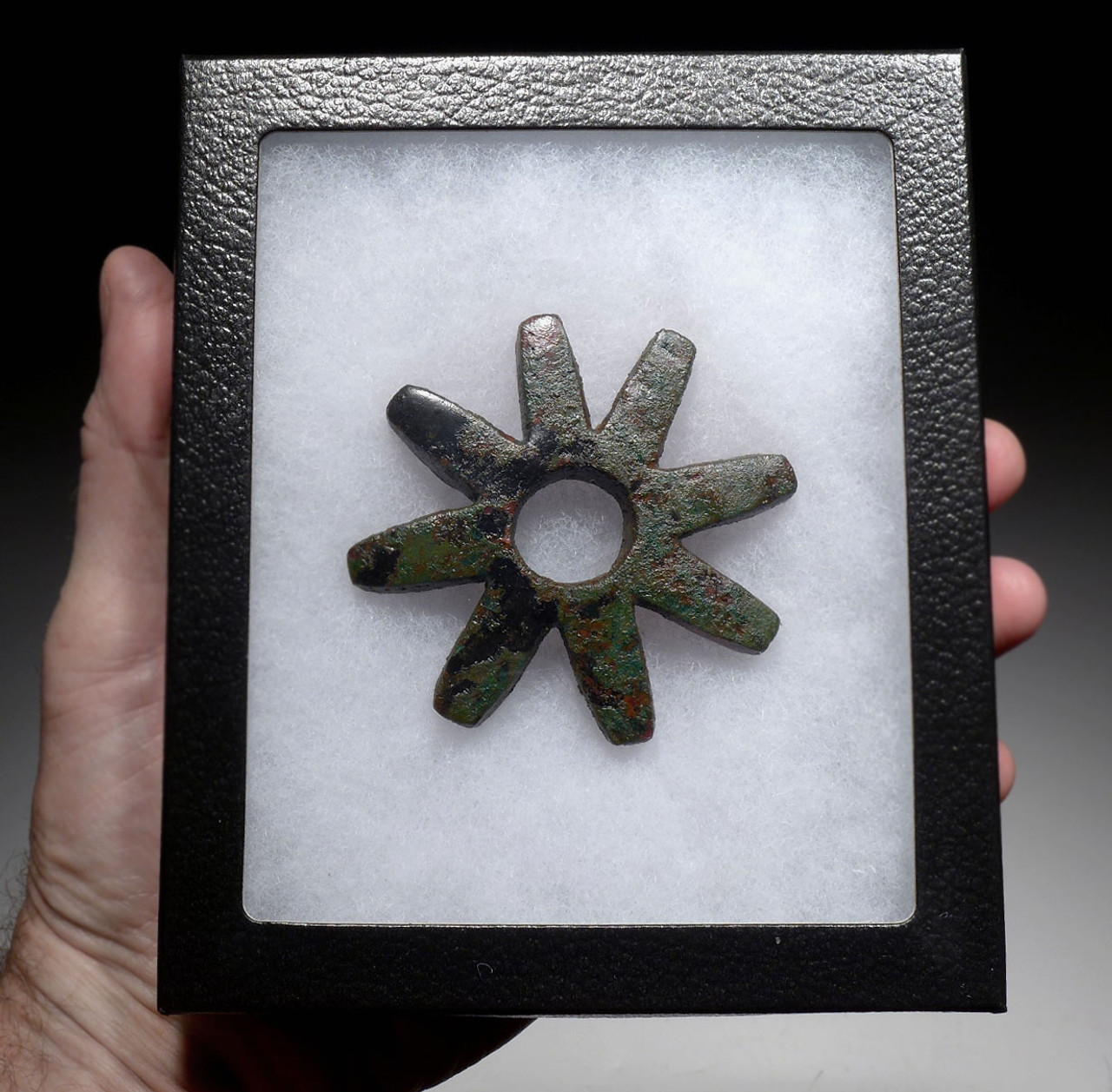Product Description
With its flattened cross-section design and reduced size, this is a unusual version of the classic star maces of the Inca Empire of Pre-Columbian South America. The main god the Incas worshipped was a sun god and star maces such as these were likely representations of their deity, perhaps an effort to win favor in combat for protection of harm. One thing is sure is that this design was extremely effective in delivering deadly blows with effective penetration to break bones and inflict nasty wounds. This exceptional specimen was made of a copper-rich bronze alloy and displays a superb patina and preservation. It is undamaged and complete! The reduced size on a long pole made this a very swift weapon to swing with the additional speed making it especially effective in battle.
SEE MORE PRE-COLUMBIAN ARTIFACTS
HISTORY
Starting in the beginning of the 13th century A.D. until their final defeat to the Spanish in 1572, the Inca Empire grew to become the largest empire in pre-Columbian America. Their peak was between the years 1438 and 1533 where they ruled an area as large as the historical empires of Eurasia. Their territory included Peru, southwest Ecuador, western and south central Bolivia, northwest Argentina, the majority of modern Chile, and southwest Colombia, controlled from their center in the city of Cusco in southeastern Peru.
A number of religious cults existed in the empire with regional beliefs but the Incan leadership practiced the worship of their main sun god, INTI. The Incas considered their king, the Sapa Inca, to be the "son of the sun.".
Despite the Incas building one of the largest imperial states in human history, they lacked many basic inventions. They had no wheeled vehicles, did not use animals for transportation or pulling plows, had no knowledge of iron or steel, and used no form of writing. The Inca Empire functioned largely without money or markets, instead using the barter system for the exchange of goods and services. In light of this, they were far from being a primitive society. The Incas built monumental stone architecture that to this day, still defies explanation. They also developed an extensive system of roads and highways reaching all ends of the empire. Their achievements in finely-woven textiles are legendary, and they developed innovations in farming and architecture in the extreme terrain of the Andes where most civilizations would have never dared occupy.
 US DOLLAR
US DOLLAR
 EURO
EURO
 AUSTRALIAN DOLLAR
AUSTRALIAN DOLLAR
 CANADIAN DOLLAR
CANADIAN DOLLAR
 POUND STERLING
POUND STERLING










